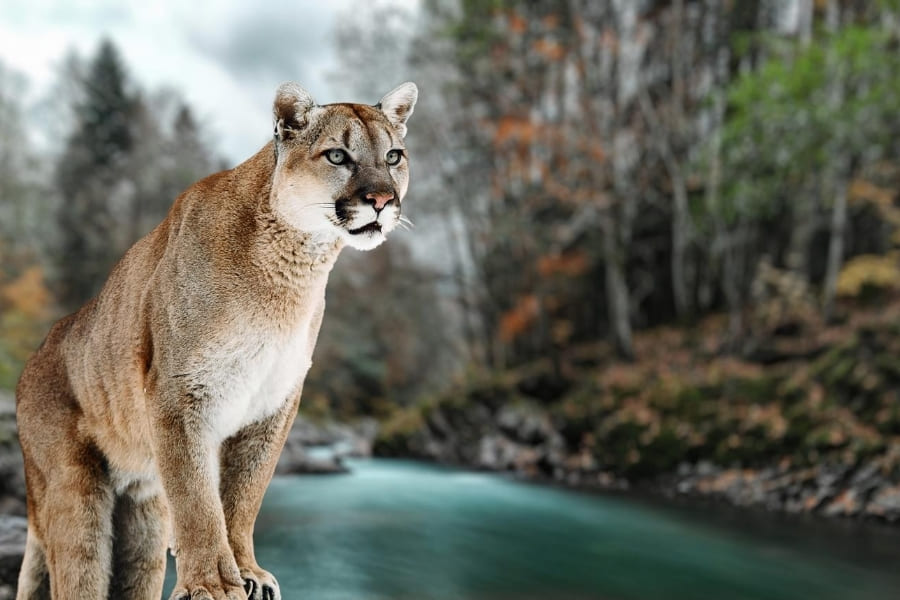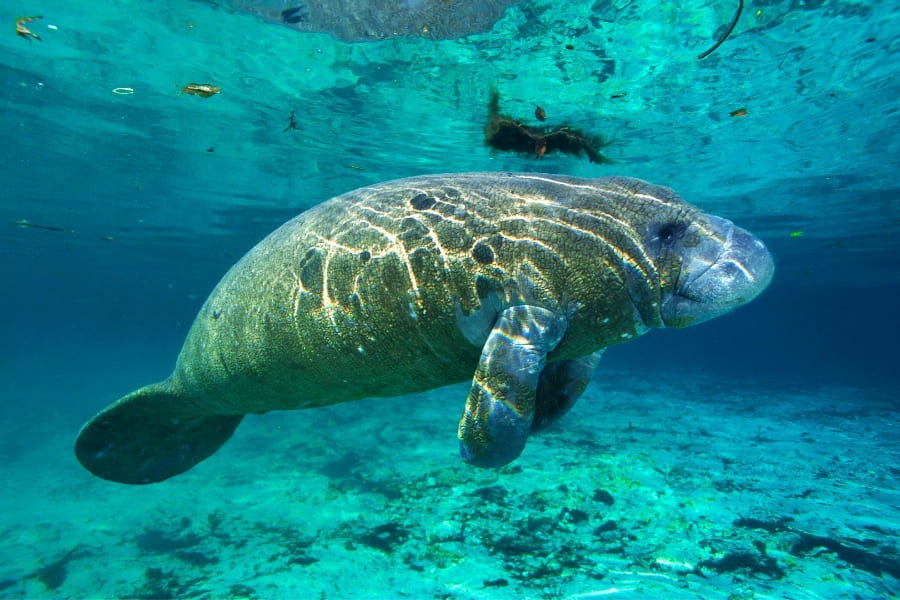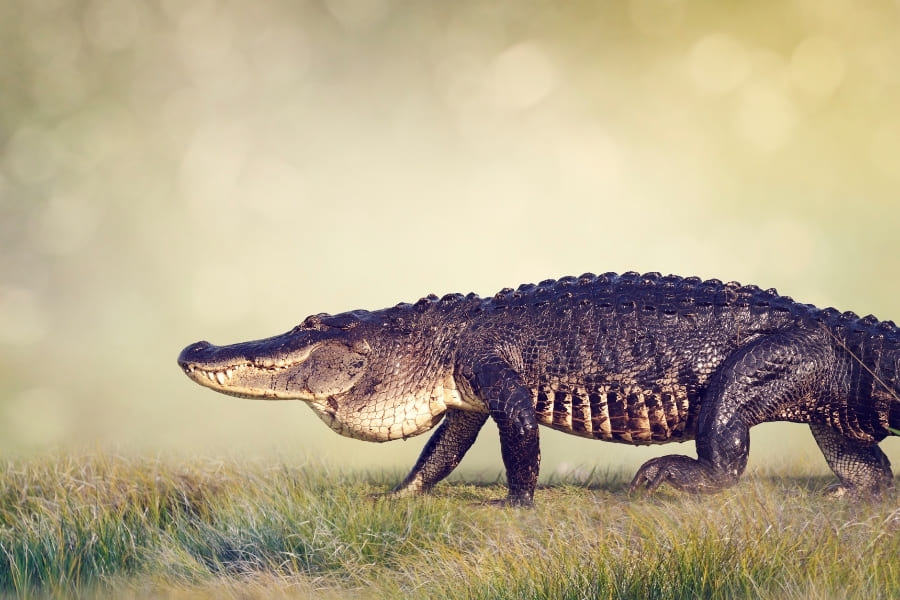Paw tracks in the mud, piles of leaves, scratch marks on trees – these signs indicate the presence of an elusive animal: the Florida panther. In order to protect this endangered species, the Florida Panther National Wildlife Refuge was established. In addition, other rare animal and plant species also live in this area.
With its rather moderate size, the refuge is perfect for a short nature trip – completely free of charge. We will show you how to make the most out of your visit, which animals you can see and when particularly worthwhile activities take place.
Florida Panther National Wildlife Refuge – important Facts
From its history to different plants and animals and the best time for visits – here are some important facts about the Florida Panther National Wildlife Refuge:
History and Management
The history of the Refuge is inextricably linked to the Endangered Species Act of 1973. This law mandated the creation of protected areas for endangered species, and one of them was established in 1989 to save the Florida panther from extinction.
For this purpose, the US Fish & Wildlife Service purchased an area of 38 square miles, which was expanded 7 years later. To this day, the agency is responsible for managing the protected area.
Another group that takes care of conservation efforts and projects for visitors is the non-profit organization „Friends of the Florida Panther Refuge“.
Location and Climate
The Florida Panther National Wildlife Refuge is located about 35 miles east of Naples, bordering Parkway 93 in the south and State Road 29 in the east. With an area of 41 square miles, it is one of the smaller refuges in the state.
Like in the rest of South Florida, the climate is dominated by alternating dry and rainy seasons:
The dry season lasts from October to May. It sees temperatures of 25–30° C and moderate rainfall.
The refuge is also open in the summer months. Due to heavy rainfalls, however, many paths are flooded during this time. In addition, swarms of mosquitoes and high humidity make the summer months a less popular season for visitors.
Plants
The Florida Panther National Wildlife Refuge features different landscapes, which in turn are home to a wide variety of plants:
About 20 % of the area consists of flat, lightly covered coniferous forests. Another form of vegetation are hardwood hammocks: dense islands of deciduous trees that harbor more than 300 plant species. In addition, there are grassy prairies, swamps and cypress forests, which are flooded for several months of the year.
Especially during World War II, cypresses were cut down on a large scale. Lately, the population has been able to recover – although it will take a long time for these giants to regain their original size.
Animals
The name of this protected area is no coincidence, as the rare Florida panther still lives here. However, with only 11-16 specimens remaining, you are very unlikely to spot one. If you do, you might be in for a surprise: Unlike their relatives from the „Jungle Book“, Florida panthers are not black, but brown. They look similar to pumas – and in fact, are closely related to these felines.
Of course, panthers are not the only animals that populate the refuge. Permanent residents include more than 120 species of birds: among them storks, kestrels, gnatcatchers and caracaras: birds of prey with large beaks that are often spotted on wooden poles.
Mammal species include white-tailed deer, black bears, lynxes, armadillos, raccoons, and coyotes. In addition, frogs, snakes and alligators populate the wetlands, while blooming flowers along the paths attract butterflies.
Visitor Center
Unlike many national parks, the Florida Panther National Wildlife Refuge does not have a full-fledged visitor center. There is, however, a main office a few miles north of the hiking trails. Although it does not offer access to trails, the office is still worth visiting if you want to take a brochure or have questions about the refuge.
Florida Panther National Wildlife Refuge – Things to Do
Since the Panther Refuge comprises a rather small area, the number of things to do is somewhat limited. Depending on the time of your visit, you have the choice between the following activities:
Hiking
There are two hiking trails at the Florida Panther National Wildlife Refuge:
The first one is a 550 yards gravel path that leads through lush vegetation and wooded hills. This path is well marked and easy to walk, even for beginners.
Being slightly longer, the second path winds its way through grassy prairies and coniferous forests. It takes about 45–90 minutes. Although Florida panthers mostly populate the inaccessible parts of the refuge, you might see their tracks along the path if you are lucky.
Please note that the second trail may be flooded and overgrown during the rainy season. Therefore, it is best to ask the refuge´s main office about the condition of the path (phone: 239-657-8001).
No matter which trail you want to tackle, the best time for wildlife observations are the early morning and late afternoon hours. Around noon, on the other hand, many animals seek shelter from the heat of the day.
Guided Tours
Every year in spring, usually on the third Saturday in March, the non-profit organization „Friends of the Florida Panther Refuge“ hosts an Open House program: Then, parts of the park that are usually off-limits are opened to visitors.
Activities include swamp buggy rides, bird watching, plant tours, and guided hikes through the swamp. Bow and arrow shooting and other fun activities for children are also regularly offered.
In the near future, hunting and fishing could become legal at the refuge, as the U.S. Fish and Wildlife Service seeks to expand visitor access to many protected areas in Florida. More specifically, planned activities at the refuge will include sport fishing and turkey hunting.
FAQ – Frequently Asked Questions
When does the Florida Panther National Wildlife Refuge open and close?
The parking lot as well as the refuge’s two hiking trails are open seven days a week from sunrise to sunset. Staying overnight in the protected area is prohibited.
What is the entrance fee for the Florida Panther National Wildlife Refuge?
Hiking in the protected area is free of charge. However, the organization “Friends of the Florida Panther Refuge” accepts donations to finance their conversation efforts.
How long should I stay at the Florida Panther National Wildlife Refuge?
The publicly accessible hiking trails only comprise a small portion of the refuge. Even the longer trail can be completed in 90 minutes or less.
How likely is it to see a panther at the Florida Panther National Wildlife Refuge?
Florida panthers are shy, well-camouflaged and nocturnal animals that avoid humans. Therefore – and due to the small population of less than 16 animals – sightings are extremely rare.







